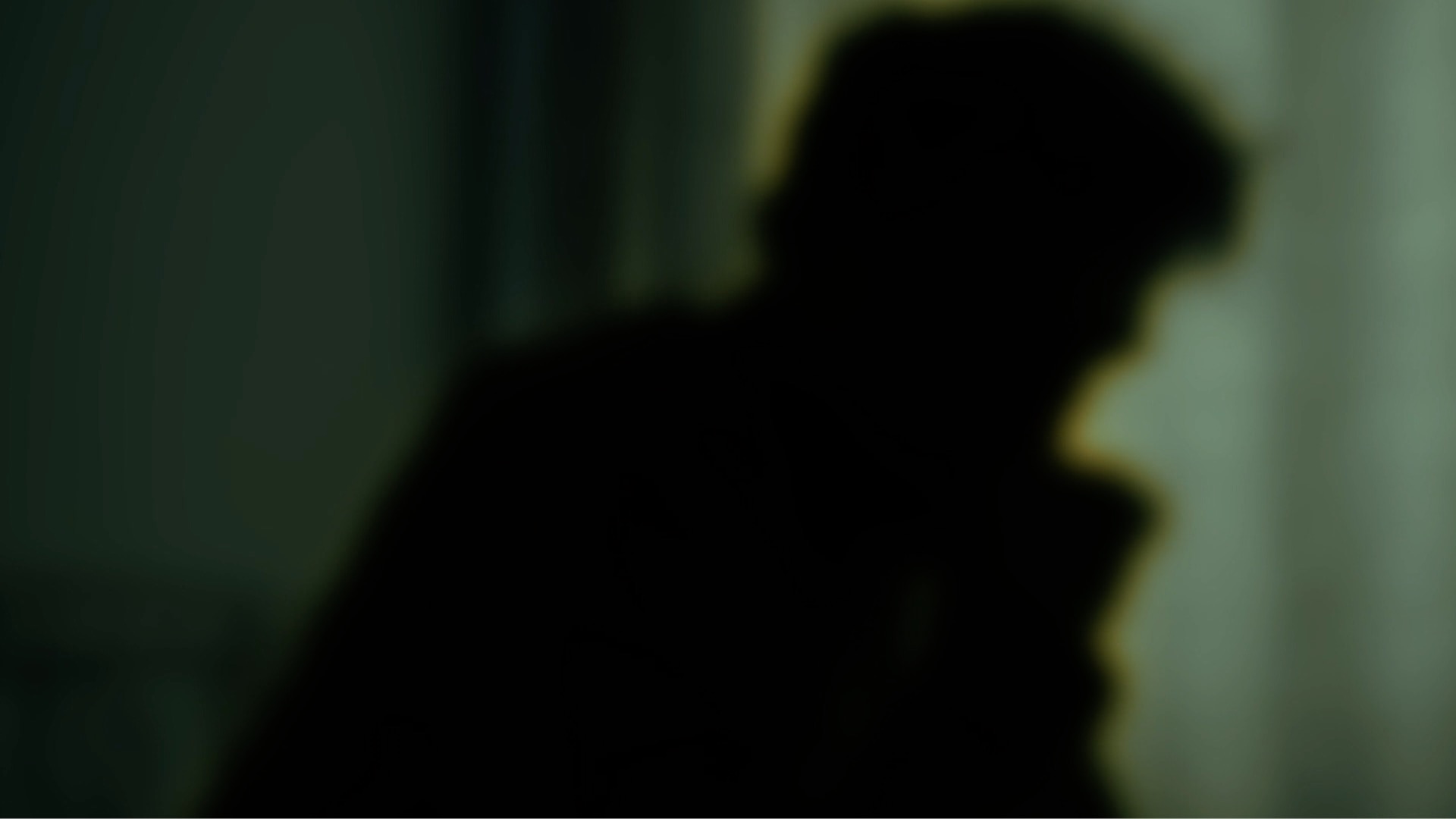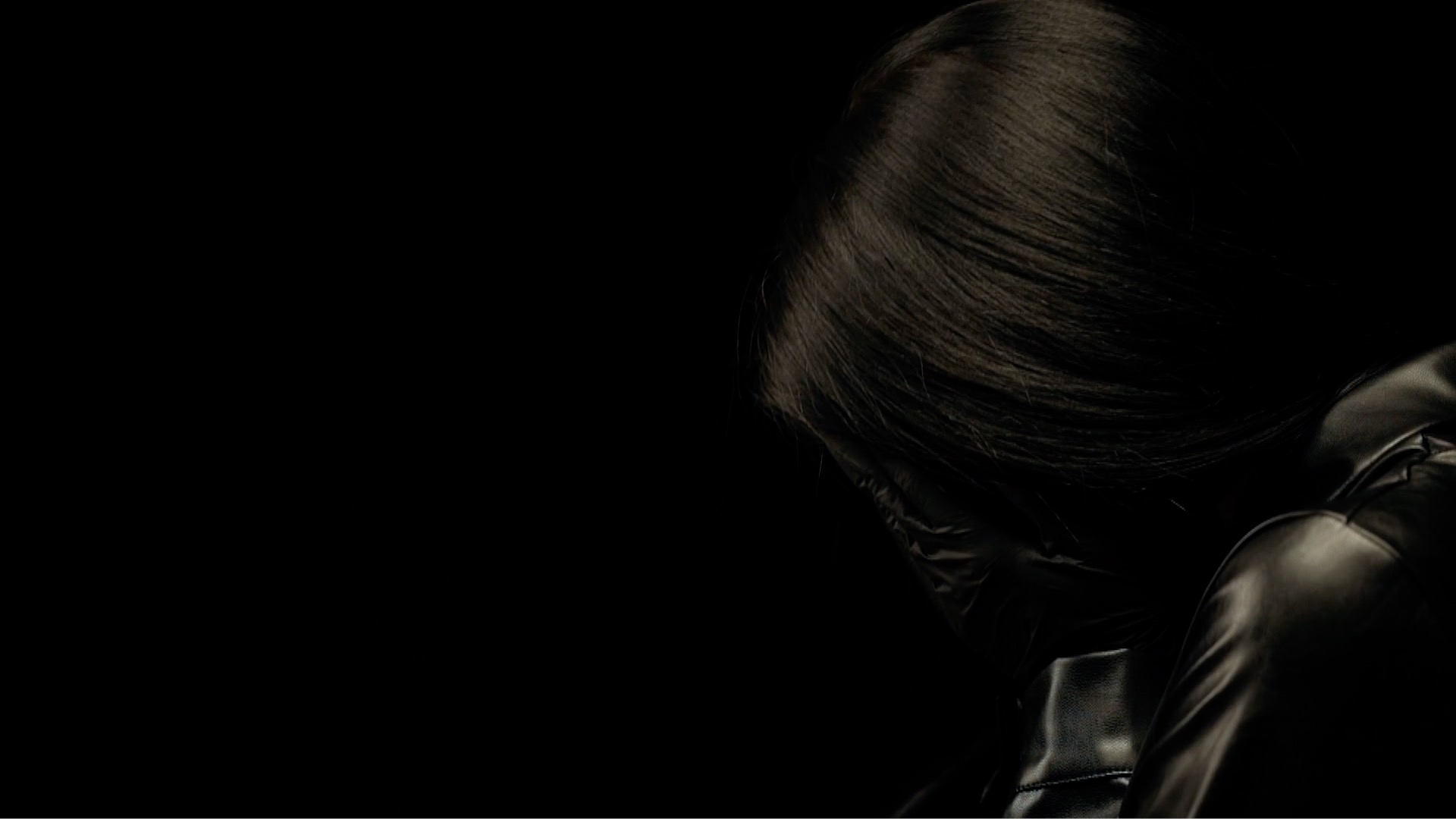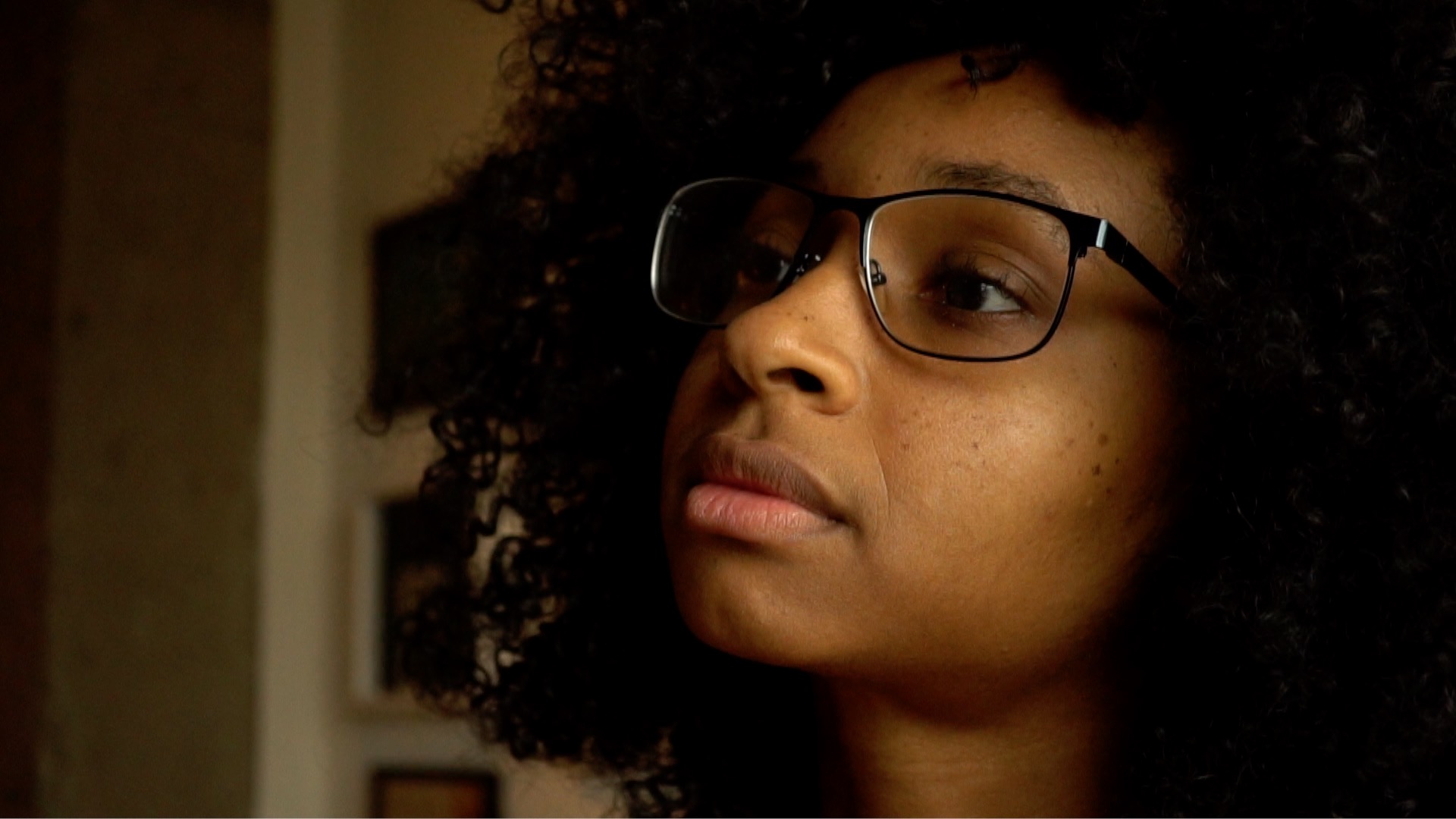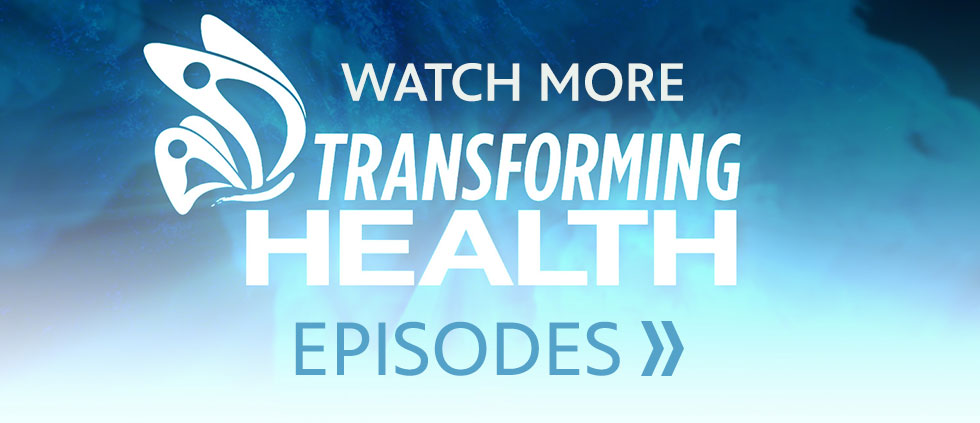Suicide in a Time of Unrest
The Coronavirus pandemic combined with the unrest we’ve all witnessed has led to negative feelings like isolation, fear and stress. How will those emotions affect us in the years to come? On Transforming Health: Suicide in a Time of Unrest we’ll uncover what we know about suicide rates now and we’ll offer tips for prevention.
You are not alone. Stay if you can. These are words of advice from suicide attempt survivors and today it seems those words are very important to share. Stay if you can.
Prior to the COVID 19 pandemic and the unrest we continued to experience, suicide was a leading cause of death in the U.S.. In 2019, we lost one person to suicide every 11 minutes with risk factors like social isolation, job loss and financial problems. Many wonder if suicide rates will only increase now.

Hello and welcome to Transforming Health Suicide in a Time of Unrest.
I’m Keira McGuire.
Over the next half hour, we’ll highlight the stories of those whose lives have been touched by suicide personally or professionally, those that hope their words of understand may reach others who are struggling.
Today health care is about empowering people to take control of their health, whether creating a fitness routine, choosing the right procedures in medications, or adhering to treatment for a chronic condition. Capital Blue Cross, dedicated to underwriting, transforming health for the good health of the community WellSpan Health. Helping patients reach their health goals through a coordinated system of physicians, hospitals and convenient health care services in communities across central Pennsylvania. Learn more at wellspan.org. WellSpan Health. For the journey that is life. Support also comes from viewers like you. Thank you.
I look at suicide as one of the epidemics before we ever moved into and found ourselves in the middle of COVID 19 pandemic of 2020.
At that point we were looking at that for all ages. Suicide is the 10th leading cause of death.
For all ages.
It is the second leading cause of death for people between the ages of ten to 34.
So even before the pandemic, this is something that was really important. We’ll probably not really get a sense of 2020 from it, maybe about another year or so. What we do know also is that depression rates, anxiety rates, increased throughout 2020 during the pandemic. Anxiety rates tripled through the summer of 2020 and depression rates had quadrupled during that time. Consistent with rises in anxiety, rises in depression rates, there could very well be an increase in suicide deaths.
We have been going through a tremendously painful revelation that there are a lot of things that are outside of our control. We’ve gone through a painful revelation that the only thing that we can really rely on is that things are always changing, regardless of our desire for them to actually be stable and consistent, which in some ways I don’t know where we got that idea because nothing in the world is stable or consistent.
Loss of life is one, just one of many things. So we had loss of jobs, loss of housing and food security, just the loss of being able to stay connected. You know, we’ve had significant challenges within our political climate with the presidential election, divisiveness across our country in terms of politics and race relations and being able to have conversations about inequities not only within health care, but across the board. The death and murder of George Floyd in the summer of 2020 that also created another storm within the storm of what’s happened in the pandemic. So all of these things take a toll on us emotionally, psychologically. It would be to be expected that this would weigh uniquely to the individual and how we experience, but it’s also collectively, you know, this has been at times very challenging and also at times traumatic.
When people don’t know how to navigate their stress and things feel so huge and permanent and beyond their capacity, then I just can’t be here is going to increase as an internal narrative.
My name is Dese’Rae Stage and I am a suicide attempt survivor and a suicide loss survivor.
The first time I experienced suicidal thoughts was when I was 14. The transition between middle school and high school … puberty… I think it hit me hard. The lack of sleep. I started failing class. I started questioning my sexuality there was a lot of stuff going on at home that was really hard and I felt really lonely.
I didn’t have the coping skills to work through all of those things at one time. And I got overwhelmed and I started thinking about dying.
The first time I lost a friend to suicide was when I was 15, and that really scared me because I think, I think, because I had already been feeling those things and I had never lost someone before or not, not like that. And ultimately, I did attempt suicide for the first time when I was 17.
A couple of months after I went away to college, 911 happened. And that was my first experience out in the world as an adult. So there was grief there. A lot of fear.
I remember, you know, in the two years leading up to that, I spent a lot of time ruminating about different ways that I could end my life. What could I do with my car? What could I, how could I, where can I sit where could I stand? That would look like an accident. And so, you know, then I was taken to the hospital in an ambulance.
I still have my discharge papers. And so it said at the very bottom of the second page and really like six point font, it said, follow up in 24 hours.
And the number gave me was 0000000000.
So even if I had felt like, you know what, this is working out really well for me, I really want the help that I’m being provided here. I would have had nowhere to go the next day.
I was lucky that I had people ready to catch me. That suicide attempt kind of led me down a path toward photography, toward coping through art. How could I use my camera? How could I use the skills that I had learned to help in the suicide prevention field? And that’s what led me to “Live Through This”.
“Live Through This” is a series of portraits and true stories of suicide attempt survivors across the country. I’ve been working on it for 11 years. What I’ve taken away from my work with “Live Through This” is for a lot of us, the thoughts persist in some form or fashion.
I have chronic suicidal thoughts.

You know, the wind could blow the wrong way. And I’ll think, well, would it be better if I wasn’t here? And that is something that over time got more manageable as I realized that it wasn’t really dangerous to me. And as I learned how to cope with it and not give it space.
I never thought I would attempt suicide again. I really thought that I had gotten to a place where I had I had done so much work on my coping skills, so much work on what happened and what I could do to get through it and da-da-da-da-dah…
So when the pandemic hit, about a month into it, my grandfather died. And my grandfather is, for all intents and purposes, my father. And losing him has been one of my greatest fears for more than half of my life. And it happened. And I did not handle it well.
And, you know, grief is … grief is the boss. You are not the boss of grief.
So it was a pandemic, which is scary. But I was, you know, dealing with it. I found the good things in it.
Then then this loss, then the protests. And in Philly, it got a little scary. Not the protests themselves, but the responses to them. I mean, all night long from like 9 p.m. to three or 4 a.m. for two or three weeks, you would hear like explosions, consistently, every couple of minutes.
Having two toddlers at home for six months with no brakes, not being able to go on dates, just everything. And by, you know, by January or February, I felt like I hit just such a fatigue point that everything began to feel like more than I could bear. Like I was just this stack of plates was just bigger and bigger. And every day it was like something new.
And I was so angry. It was angry at everything. I wasn’t sleeping, I wasn’t eating. And it just resulted in a crisis that lasted for six weeks.
It was it was awful.
But I really I have no idea how many times I attempted it, at least four, between May and June.
It’s really hard to see the other side of this. You know, we’ve got the Delta variant, we’ve got the Lambda variant, we’re masking again, or not, or you never know how to feel because it’s like, should I be masking? Other people aren’t masking. Am I my mad at them? Am I frustrated at the masking? Am I scared? I don’t even know what’s going on anymore.
Hi, I’m Meghann. I am a multiple suicide attempt survivor. And for the past, I’d say, 36 years have lived with thoughts of suicide and self-harm.
Ironically enough, at the time when I was 16 and kind of all these feelings popped up, there wasn’t really any particular trigger for that.
I had excelled at school. I was on the basketball and volleyball teams at my high school and was doing very well in those.
It was just kind of like a wave of depression hit me and just hopelessness. And I think the only way I can describe it is despair.
My mom finally was kind of exasperated and asked like, What is going on? You need to talk to me. And I remember it was around like going to bed. And I just looked at her crying and said, I just I don’t want to live anymore. I don’t want to be alive. It would just be like this constant gnawing thought in the back of my mind of, things would be so much easier if I wasn’t here.
Constantly thinking, how do I do this where it’s not going to hurt that much? How can I do it where my parents, my family, doesn’t feel that it was their fault or I let them down.
At that time that I told my mom, that’s one of the first things she did. She got me into the hospital. The first therapist I saw, he was more labeling me as a lazy teenager, a moody female teenager.
Everything, in a sense snowballed from there to where I really struggled the rest of my high school career, unfortunately. The thought was always there and it was just this … it just would not go away. And it it just kind of took everything out of me. It took everything I had to get through the days and to not think about it.
I think for me, the first word that comes to mind is “terrifying” because you know that that’s not a normal thought to have. So there’s fear, there’s kind of like that self judgment of what’s wrong with me? Why can’t I get through this? Why am I thinking like this? And then there’s the, you know, the thoughts of, well, if I weren’t here, these would go away.
I would say at least ten, if not more sad. It’s hard to keep track of how many times. And I think some of them were intentional. Some of them were less intentional of using drugs, alcohol, using that to cope or self-medicating with things that at the time, you know, but don’t know that it can kill you. It was a matter of not caring, but many times, you know, just kind of fighting the urge to drive off the road so for the next few years, I look at my life, I was just kind of floundering through, had unhealthy, abusive domestic relationships.
I had my son at 22, I’m sad to say, even after I had my son, I really struggled a lot not having that correct diagnosis that it can really do damage because you don’t know what to do.
And at this point, I kind of have given up on therapy. I was using drugs. So the medications, if I was taking the medications, they weren’t working.
So it was just struggling.
I was diagnosed with major depressive disorder. And then over time, it kind of transitioned to bipolar one and then bipolar two. Throw in a PTSD diagnosis. That is correct. I have anxiety disorder, panic disorder.
And then about the age of 30, I received a diagnosis of borderline personality disorder, which I had never in my life had heard of. I was at an out of county hospital, and the therapist was just kind of … it was a very weird kind of kismet moment where she was only filling in. And she asked me if I’d ever heard of it, and I had not. She ran through all of the traits or symptoms, rather, and I started crying because for the first time, everything that I’ve been through in my life kind of made sense.
And from from that moment on, it was kind of like, okay, how do I address this? And, and what can I do.
And we found out that unfortunately what we had been doing or what doctors had been doing for me throughout what the 15 or so years that I had been in and out of facilities and doctors and therapies, medication wasn’t the, the goal treatment for, for that diagnosis.
And I’ve kind of learned through therapy that it’s not who I am. It’s a part of me. So I don’t say I am borderline. I say I have borderline.
I was working at a health care facility when the when the pandemic hit. There was a lot a lot of fear involved in that. My anxiety hit a point where it hadn’t been in a very long time.
I stopped watching the news because they had that ticker at the top where daily numbers and for me that was just it was too much because if I would have let that creep in, I really would have never left my house. I would have been unemployed. I would have lost my home because at that point I was able to get my own home. So I had a mortgage. It wasn’t just rent.
So it was I didn’t really have the option to do what I wanted to do.
What I wanted to do was quit my job, stay inside and not go anywhere to a point just because I was so fearful.
When some of my panic attack symptoms came back … you know, a couple suicidal thoughts might have flown in and then even, you know, even kind of more recently in the past month or so, as it is, it started to get worse again, as I sometimes get discouraged by how we as a nation are kind of handling it and how we’re just kind of arguing back and forth and it’s just I think it’s a scary time we’re in right now.
Johns Hopkins put a report out that actually said if you look back at, like the, you know, the flu’s and like the late 1800s or the flu in the early 1900s or even when SARS hit Hong Kong in the early 2000. There was a spike in suicide.
When we’ve tipped into no longer having the capacity to deal with things. This is something we’ve seen historically. As human beings we do better when we have a predictable controllable environment. So please tell me when this is going to end, so then I can prepare to get ready and then take the next steps to move on and put this behind me.
In an effort to try to feel safe, we spend a tremendous amount of energy trying to control things that are not ours to control. In a particular moment, you cannot resolve everything at work. Figure out vaccinations, figure out like in that particular moment.
Yet none of that is actually happening, right? None of that’s actually being fixed and resolved. And so that part of feeling like I have a sense of control because I am thinking about these things is unfortunately one of those pieces that we have to unlearn. But then we have to sit with not knowing which nobody likes to sign up for, right?
And that’s where the compassion practices come in. How do I take care of myself knowing that in this particular moment I’m not going to be able to resolve it? What do I have some influence and control over in this moment? It gives me time to just pause, to be present right here in this moment.

Sometimes it’s very stressful depending on what is happening in one’s life. And being in that moment without any judgment and just taking in those moments can just give us that peace and that respite that we need to be able to put our energy into something that we can have influence and control over if we allow ourselves to kind of stay in that whirlwind, it’s very difficult just to be able to find a way to stay grounded. And sometimes when I say stay grounded, it means literally thinking about my feet touching the ground and being in touch with that. Sometimes it’s just getting into all my senses right now. If I took a walk outside and I let some of the sun just hit me on my skin. What does that feel like? What is the air smell like? Taking that in, all the different senses, just being in the moment, to slow things down. And when you suddenly start to realize like, oh, the amount of sleep I get and, you know, the amount of hydration I have and how much I move my body and whether I feel like I’m, you know, connected to my values in the person I want to be. Suddenly you realize, how do I even think I had any time or energy to control all the stuff out here when there’s actually so much that I need to pay attention to for myself.
Life often speeds up, sometimes even without us wanting it to me. So it’s like, oh my gosh, can someone just slow this down a little bit? I liken it sometimes to the treadmill where sometimes someone gets on the treadmill and someone increases the speed to an all out speed and you’re like, I didn’t even get a chance to warm up yet. And then it continues and it continues and it continues. And you feel like, Oh my gosh, this. How do I how do I slow this thing down?
Taking care of ourselves so that we are more thoughtful, responsive, more open minded, more willing to negotiate, more willing to hear other people’s perspectives rather than just being reactive is actually a radical act of responsibility to the people around us. So it’s far from selfish.
In fact, I think that what is more selfish is not taking care of ourselves so that we are just spilling out our reactivity on everybody else around us and getting ourselves into situations that cause us more pain and cause more pain with the people around us.
2021 has been the worst year of my life, followed closely by 2020. I went to Utah and I was hospitalized for a month, sort of voluntarily. It wasn’t my favorite idea, but I did it because I knew I needed help and I came back and I’m working really hard doing lots of therapy, giving myself a lot of space in a way that I never had before. Saying no to a lot of things and just really making like, just making as much space as I can for myself and my kids and my wife. I’m okay.
I’m, you know, it’s the first week of school again, so I’m doing a little stress, but I’m trying really hard to not feel that way. And my wife and I are just doing just doing a lot of, “Okay, what do you need right now? All right, I’ll do that.” “What do you need right now? Okay.”
Just a lot of shuffling because we’re both, like, really back at it and it’s feeling … it’s feeling better. But I don’t, you know, I don’t want to get too cocky about it. I’m still kind of afraid the ground could crumble beneath me. But but it’s you know, I think we’re making progress. I think things are feeling better … a little bit.
I had a therapist once tell me, “Meghann, there’s a very real chance that you could have these thoughts for the rest of your life. It’s just a matter of how you are going to get through them.”
Still a suicidal thought will creep in if things get really tough and really stressful. But as quick as it comes in, I’m able to kind of push it back out and know that that is not an option for me anymore. And I also identify as that’s part of my illness, but it’s not who I am or what I have to do anymore.
It’s not perfect. Nothing ever is. But it is pretty amazing.
I kind of every once in a while I get scared that the rug will be pulled beneath my feet.
If somebody is talking about wanting to commit suicide, this may seem a little weird. But that’s actually a good sign. I mean, I say to clients of mine, you know, if you’re going to kill yourself and you want to kill yourself, you’re not going to tell me about it. I’m just going to find out about it. And so if somebody is actually talking about it, that means there’s a part of them that wants some help.
Okay. So if we can understand, and see that as a little bit of a hope, rather than suddenly like how can we, you know, freak out and get them into … or clamp down on them, then we can actually have a much more compassionate and helpful response to them.
You know, I often say we all can think of a time when we’ve been struggling and all of a sudden everyone’s got all this advice to give us and it feels incredibly invalidating. Even sometimes a little insulting. Right?
And so I think the first piece is being able to just sort of say, yeah, that is hard. Your experience, what you’re feeling, is real. You never know what’s going on in someone else’s life story, but simply just checking in with them. You would be amazed at just asking that question to someone and how that makes that individual feel in terms of just being … (sighs) someone just checked in with me and sometimes that’s all they may need.
Reach out to talk to someone.
Grab at education opportunities to kind of learn what you can do, and I know it sounds cliche, but just try your best not to give up. I know what it’s like to to want to. I know what it’s like to give up and just try to fight that urge as much as they can. If one thing doesn’t work, try five others, because at some point something will stick because there are people that are living proof of that.
When people said, “Me too.” That makes you feel way less isolated. Being able to say, “Me too.” Being able to say, “I know how that feels.” It’s such a connector. It’s such a powerful thing. A well-placed “me too” can save some lives, I think.
There are others that are willing to hold your metaphorical hand as you walk through this very difficult journey. And again, you’re not alone. Yeah, you, you’re not alone.
And stay, stay if you can.
Stay if you can.
We hope these words have inspired you whether you need to hear them or you want to spread them to others.
I’d like to thank all of our guests for sharing their stories so openly and honestly.
Please join us next time as we continue to share stories and transform health.
I’m Keira McGuire. Thanks for watching.
If you need help please consider the resources on your screen.
Today health care is about empowering people to take control of their health, whether creating a fitness routine. Choosing the right procedures in medications or adhering to treatment for a chronic condition. Capital Blue Cross dedicated to underwriting Transforming Health for the good health of the community.
WellSpan Health. Helping patients reach their health goals through a coordinated system of physicians, hospitals and convenient health care services in communities across central Pennsylvania. Learn more at wellspan.org. WellSpan Health. For the journey that is life.
Support also comes from viewers like you.
Thank you.
Keira McGuire is a health reporter and multimedia producer for WITF. She hosts and produces Transforming Health television programs as well as other shows and documentaries for WITF’s Original Productions. McGuire produced the Emmy Award winning series HealthSmart for the last ten years. Keira previously worked at WBFF in Baltimore and WMDT in Salisbury as a reporter and anchor. She’s a graduate of Towson University.




